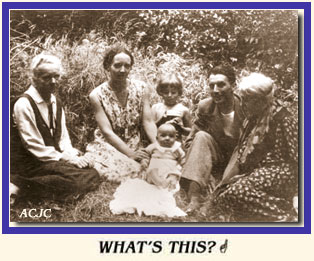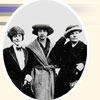     |
|
 urie
continued to do research on
radioactivity, but her main focus shifted to running the Radium Institute.
She made the Institute a center for measuring the radium content of various
products used by doctors and others. She also made it a world center for
research, carefully selecting several dozen scientists and keeping up
with the progress of each. Her researchers made many discoveries. In 1934,
she was delighted when her daughter Irène and Irène’s
husband, Frédéric Joliot-Curie, discovered artificial radioactivity
at the Radium Institute. urie
continued to do research on
radioactivity, but her main focus shifted to running the Radium Institute.
She made the Institute a center for measuring the radium content of various
products used by doctors and others. She also made it a world center for
research, carefully selecting several dozen scientists and keeping up
with the progress of each. Her researchers made many discoveries. In 1934,
she was delighted when her daughter Irène and Irène’s
husband, Frédéric Joliot-Curie, discovered artificial radioactivity
at the Radium Institute.
 Curie did not live to see Irène and Frédéric receive the 1935 Nobel Prize for their discovery. As early as 1920 she had been sufferering from medical problems, probably caused by her many years of exposure to radioactive materials. On July 4, 1934, Marie Curie died of aplastic anemia, a blood disease that often results from getting too much radiation. She was buried next to Pierre. In 1995 the remains of the pair were transferred to the majestic Pantheon in Paris, where they now lie alongside France’s greatest citizens. The president of France declared that the transfer demonstrated the nation’s respect for all those, like the Curies, “who dedicate themselves to science.” Curie did not live to see Irène and Frédéric receive the 1935 Nobel Prize for their discovery. As early as 1920 she had been sufferering from medical problems, probably caused by her many years of exposure to radioactive materials. On July 4, 1934, Marie Curie died of aplastic anemia, a blood disease that often results from getting too much radiation. She was buried next to Pierre. In 1995 the remains of the pair were transferred to the majestic Pantheon in Paris, where they now lie alongside France’s greatest citizens. The president of France declared that the transfer demonstrated the nation’s respect for all those, like the Curies, “who dedicate themselves to science.”

. . .
The End
|
|




